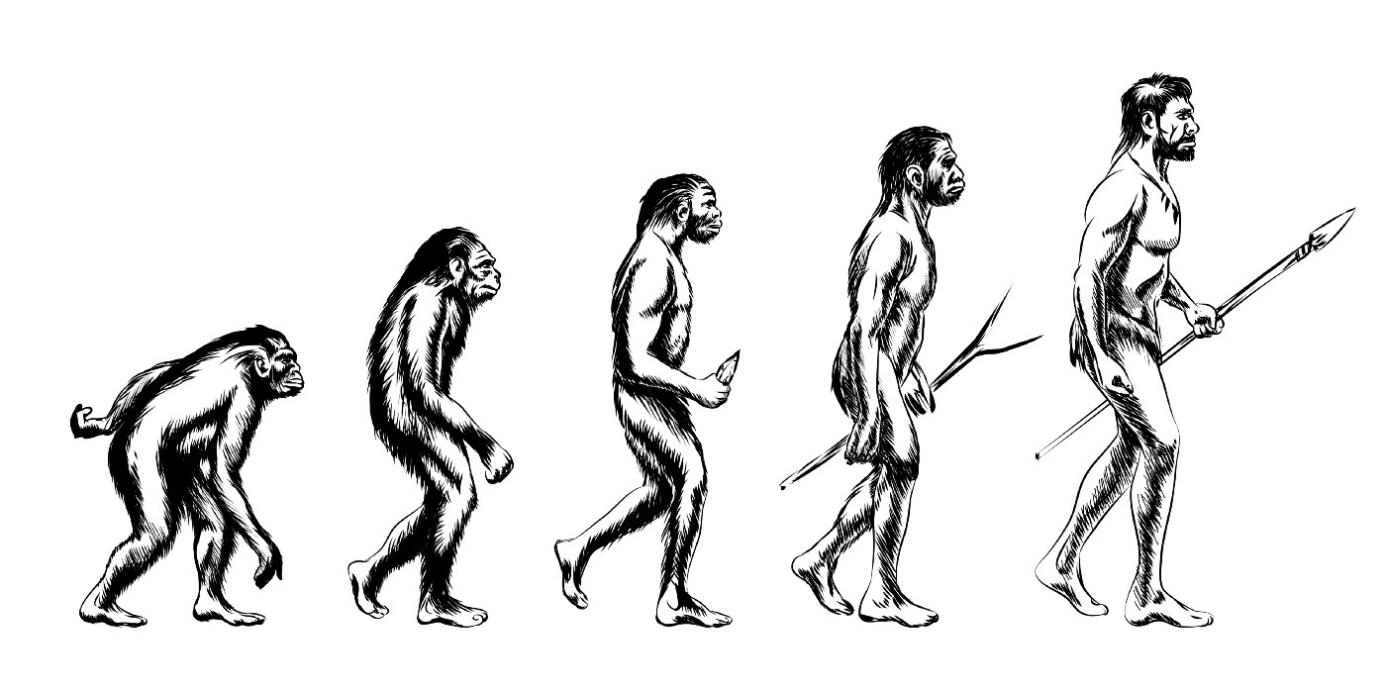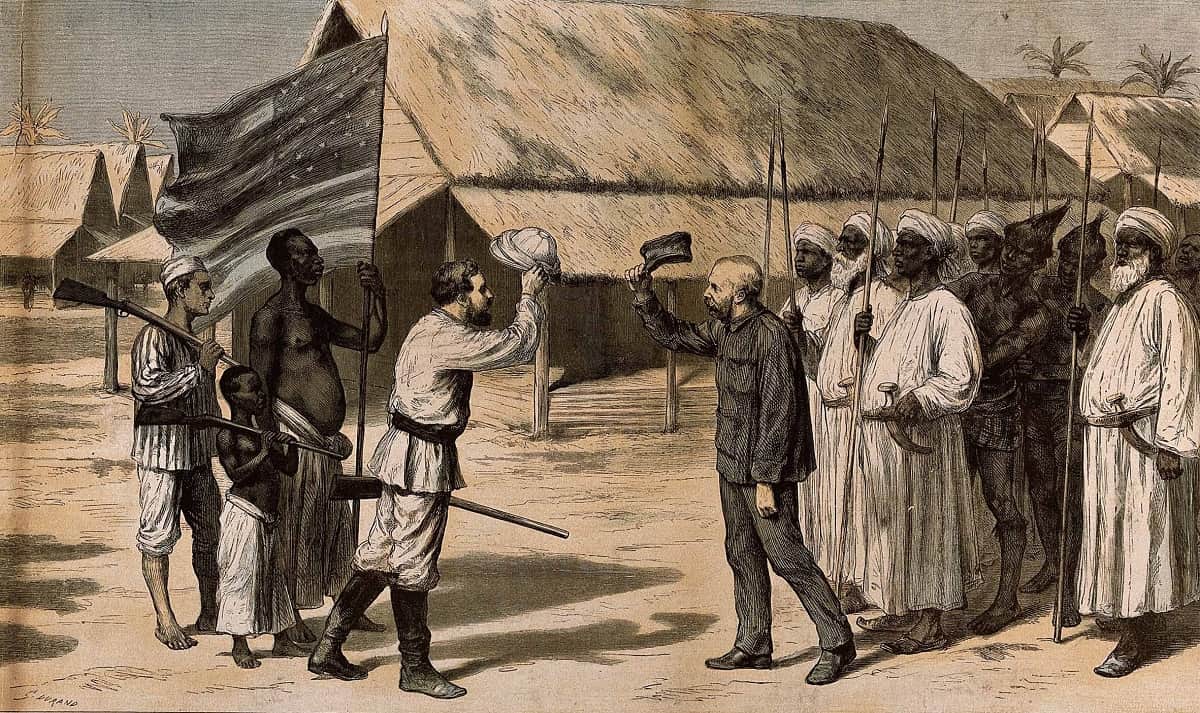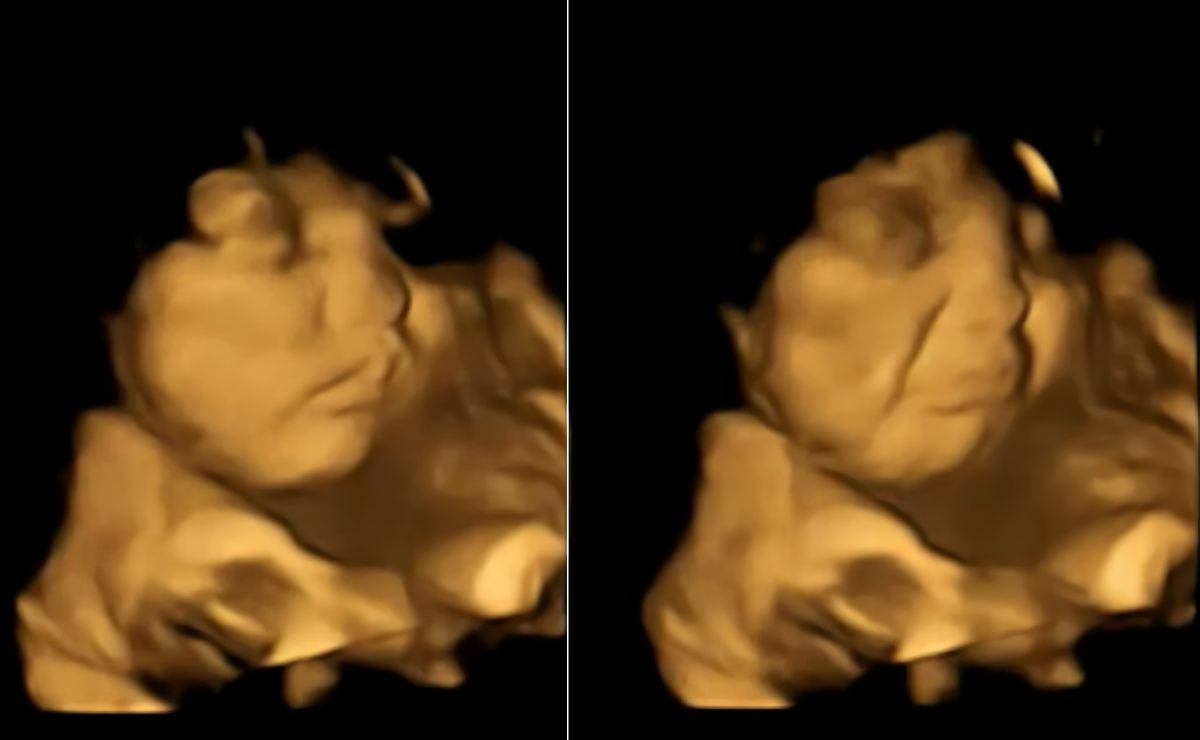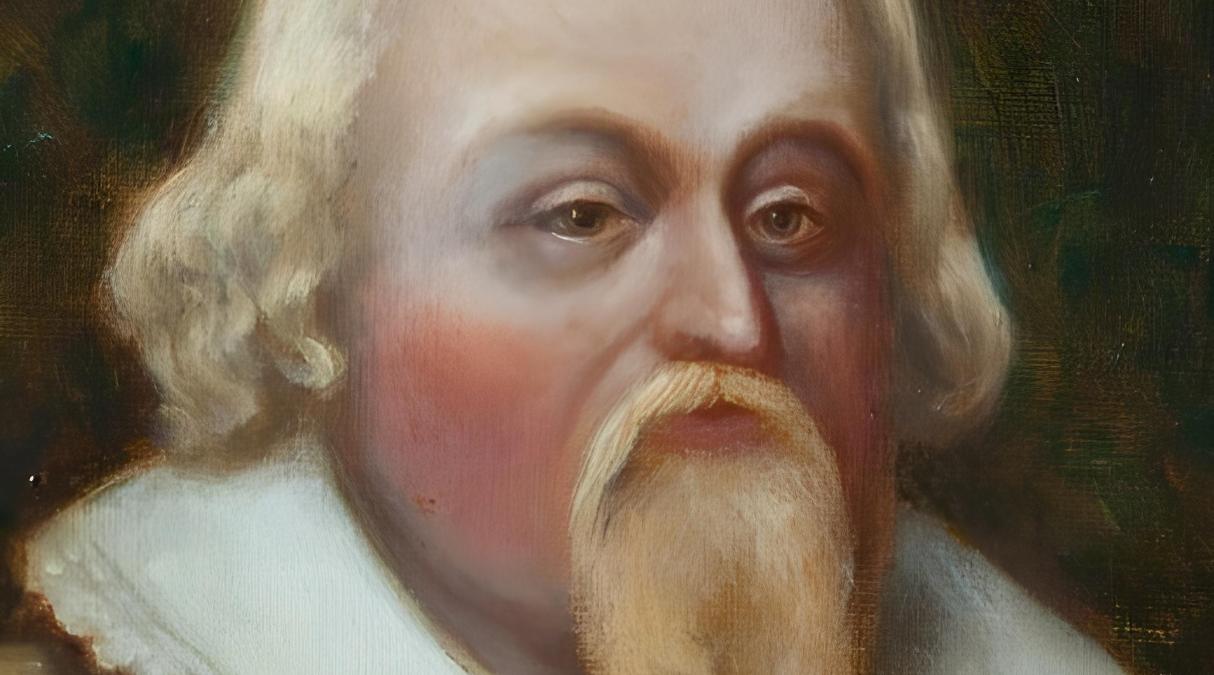Around eight million years ago, our ancestors lived in Africa. We emerged seven million years later and developed skills such as advanced toolmaking and agriculture which allowed us to establish settlements all over the world. Humans are now a distinct species on the planet, but this was not always the case.
Strange human ancestors once roamed the Earth, such as Nutcracker Man or Homo floresiensis, whose tiny bodies resembled hobbits. Fossils show that Homo sapiens once interacted with Neanderthals, and a recently discovered species known as the Denisovans adds to the evidence that modern humans and some of our forefathers lived close to each other.
Timeline of human history
- 7 million years ago:
Hominin and chimpanzee lineages merged. - 7 – 6 million years ago:
The species Sahelanthropus tchadensis may have lived before the Hominin-Chimpanzee divergence. - 5.7 – 5.2 million years ago:
Ardipithecus kadabba, a similar species of A. ramidus. - 4.4 million years ago:
Ardipithecus ramidus (“Ardi”) looked like a chimpanzee but definitely walked on two legs. - 4.1 – 2 million years ago:
Australopithecus afarensis had a bigger brain than modern chimpanzees, but still climbed trees. - 3.6 million years ago:
The date of hominin footprints found in volcanic ash at Laetoli, Tanzania. - 3.5 – 2 million years ago:
The first identifiable hominin fossils of Australopithecus africanus. - 3.3 million years ago:
The first marks made on bones with stone tools in Dikika, Ethiopia, point to the first stone tool use and meat consumption.

- 3.18 million years ago:
“Lucy” represents the actual appearance of Australopithecus afarensis; 13 males and females of different ages formed the “First Family” of A. afarensis fossils. - 2.6 million years ago:
The first known stone tools appeared in the Gona region of Ethiopia. - 2.5 – 1.2 million years ago:
The “Nutcracker Man”, Paranthropus boisei, had large teeth and jaws for grinding food. - 2-1 million years ago:
Paranthropus robustus, the first Paranthropus discovered. - 1.9 – 1.6 million years ago:
Homo habilis (“handy man”) is believed to have made tools and left bone markings. - 1.8 million years ago:
Homo ergaster was much taller and slimmer than its ancestors. - 1.7 million years ago:
The first known fossils of hominins found outside Africa are those of Homo georgicus, which was discovered in Eurasia, in Dmanisi, Georgia. - 1.65 million years ago:
The Acheulean hand axes represent an important step toward human intelligence.

- 1.65 – 1 million years ago:
Homo erectus remains were discovered in Java, but they were most likely from 1.5 million years ago. - 1.6 million years ago:
The first known hand tools in China were thought to have been made by Homo erectus, but it was later realized that they are 0.8 million years younger than the fossils recently found in the region. - 1.5 million years ago:
The “Turkana boy” is a nearly complete skeleton of an adult Homo ergaster found in Tanzania. - 1.5 – 1.4 million years ago:
Signs of fire sites were found in South Africa, but they could have occurred naturally. - 1.2 million years ago:
The emergence of the first Europeans; Homo antecessor. - 0.79 million years ago:
The first reliable evidence for the control of fire at Gesher Benot Ya’aqov, Israel. - 0.78 million years ago:
Earth’s magnetic field began to polarize as it does today. - 0.6 million years ago:
Homo heidelbergensis is now widespread. - 0.4 million years ago:
Typical Neanderthal anatomy found across Europe.
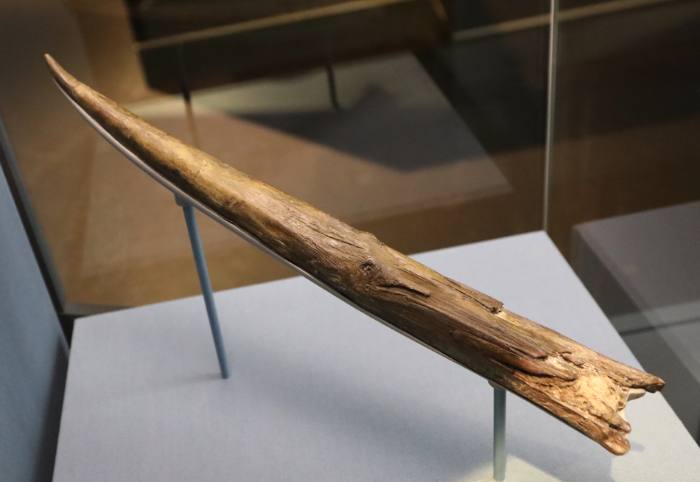
- 0.4 million years ago:
The Clacton Spear or Clacton Spear Point, was found at Clacton-on-Sea in 1911. It is the oldest dated piece of crafted wood, dating back 400,000 years. - 0.3 million years ago:
Evidence for hubs used for making tools with multiple parts. - 0.3 million years ago:
Modern human skeletal features appear in African Homo heidelbergensis. - 0.28 million years ago:
Shaped stones found in Israel may be the first examples of art. - 0.28 million years ago:
The first evidence of the use of natural colors. - 0.2 million years ago:
Mitochondrial Eve (DNA) was the last common ancestor of all humans. - 0.186 – 0.127 million years ago:
Neanderthals engaged in mass hunting and killing. - 0.16 million years ago:
Age of the Homo sapiens idaltu; the skull has some primitive features, but shares distinctive features with modern humans. - 130,000 – 115,000 years ago:
Increased consumption of fish and marine mammals in South African sites. - 120,000 years ago:
First possible Neanderthal grave. - 110,000 – 90,000 years ago:
The first Homo sapiens arrived in the Levant. - 75,000 years ago:
Advanced “blade” technologies, shell grains, and jagged ochre from Blombos Cave in South Africa.

- 73,500 years ago:
The eruption of Mount Toba in Sumatra led to a global drop in temperatures. - 46,000 years ago:
The earliest fossils of modern humans found in South Asia. - 45,000 years ago:
Widespread human settlement in Australia. - 45,000 years ago:
The first Homo sapiens reached Europe. - 40,000 years ago:
The first settlements in New Guinea. - 40,000 years ago:
Late Homo erectus lived in China. - 40,000 years ago:
The first Homo sapiens appeared in China. - 37,000 years ago:
Campanian ignimbrite eruption in Italy; ash covers much of Europe. - 36,000 – 28,000 years ago:
Some tools found suggest that Neanderthals and humans interacted in Europe. - 35,000 years ago:
Aurignacian technology spread across Europe, including typical stone tools and examples of art. - 32,000 years ago:
The first Homo sapiens appeared in Japan.
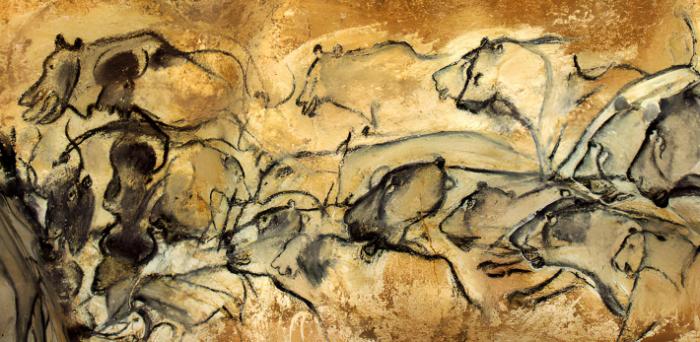
- 32,000 years ago:
Chauvet cave paintings, France. - 28,000 years ago:
The earliest Neanderthal settlements. - 28,000 – 21,000 years ago:
The birth of Gravettian culture. - 27,000 years ago:
The date of the complex settlements of hunter-gatherers on the Russian plains. - 21,000 years ago:
Solutrean technologies emerged. - 21,000 – 18,000 years ago:
Last Glacial Maximum. - 18,000 years ago:
Magdalenian technologies emerged. - 18,000 years ago:
The appearance of the controversial Homo floresian specimen, a.k.a the “hobbit”. - 17,000 years ago:
The first known spear-throwing humans arrived in the Combe Sauniere region of France. - 16,000 – 15,000 years ago:
Beginning of re-settlement in areas of northern Europe previously abandoned due to poor climatic conditions. - 15,000 years ago:
Lascaux cave paintings.
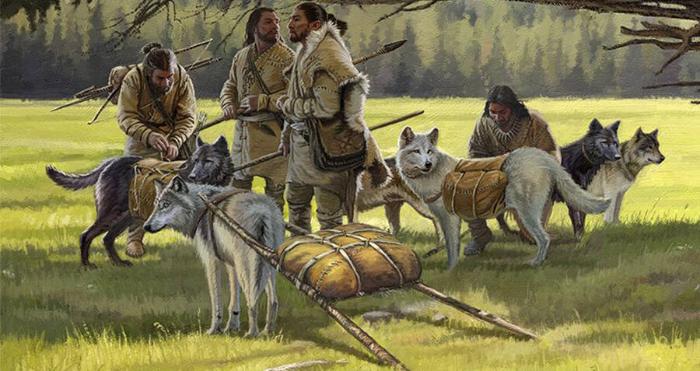
- 15,000 years ago:
Controversial early South American settlement site in Monte Verde, Chile. - 14,000 years ago:
The domestication of dog. - 11,500 – 9000 BC:
Rapid settlement of the Americas by various peoples using Clovis stone tools. - 10,800 – 9600 BC:
Younger Dryas glacial period, probably caused by melting ice sheets; temperatures rose rapidly after 9600 BC. - 10,500 BC:
The first domestication of cereals occurred with rye, wheat, and barley. The earliest evidence is from Syria, around 8000 BC. - 9500 – 8000 BC:
Construction of a temple by hunter-gatherers in Göbekli Tepe, Turkey. - 9000 BC:
The first domesticated animals in Western Asia. - 9000 – 7000 BC:
Archaeological sites in Cyprus show that the island was inhabited and that sheep, goats, cattle, and pigs were transported by ships. - 9000 – 3000 BC:
Increased rainfall created the “Green Sahara”; lakes, rivers, marshes, and meadows in North Africa. - 8500 – 7300 BC:
A stone wall built around a large village in Jericho, Israel, probably to prevent flooding, not warfare. - 8000 BC:
In China, early agricultural settlements grew corn in the Yellow River Valley.
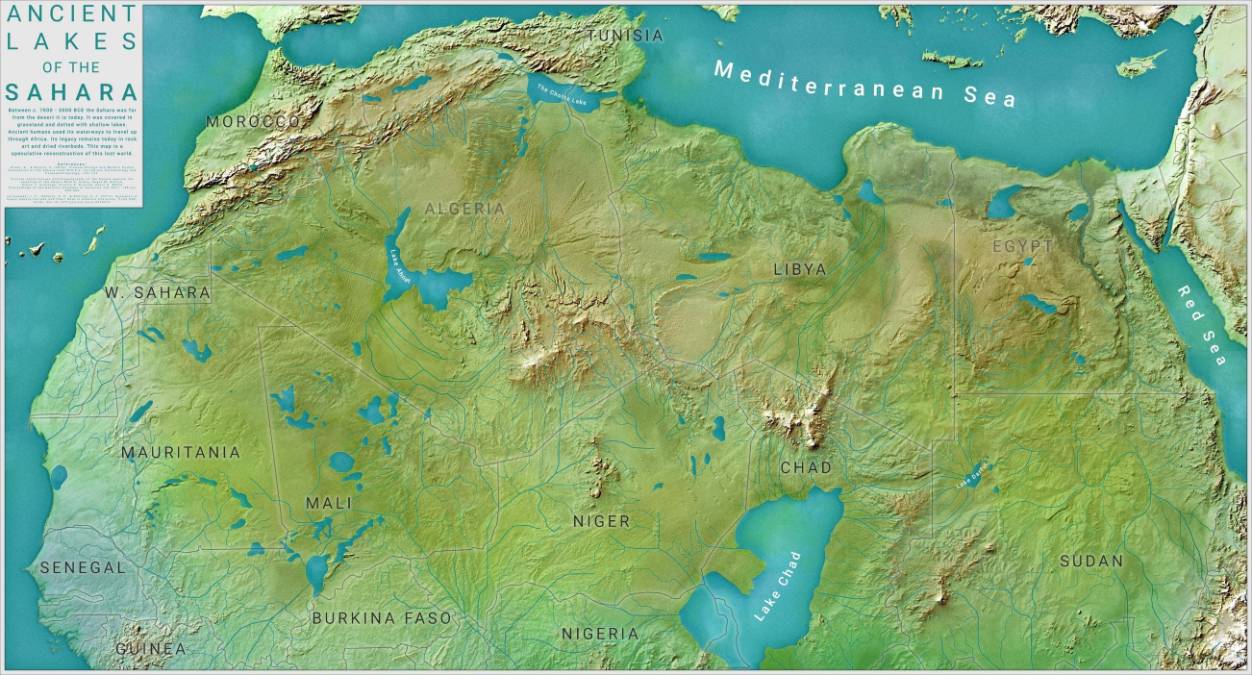
- 8000 BC:
Mesoamerica was the first place where squash was domesticated, and Ecuador is where the oldest squash and beans were found. - 7000 BC:
The first domestication of Zebu animals occurred in Mehrgarh, West Pakistan by farmers growing wheat, rye, and lentils. - 7000 BC:
The first domestication of cattle occurred by hunter-fisher communities in the Green Sahara. - 7000 BC:
New Guinea plantations were the first to grow bananas, taro, and yam. - 6500 BC:
Simple irrigated agriculture began in Central Mesopotamia. - 6200 BC:
Establishment of the first farming communities in the Euphrates Valley in Southern Mesopotamia. - 6000 BC:
Production of fish and rice, as well as pig and chicken raising, in Yangzi Valley villages (China). - 6000 BC:
The first native corn developed in Mexico from the wild teosinte plant. - 5500 BC:
Independent development of copper craftsmanship in the Balkans. - 5100 BC:
Copper mining in the Ai Bunar region of Bulgaria. - 5000 – 1000 BC:
With locally mined, cold-processed copper trade and industry, ancient copper culture flourished in North America’s Great Lakes region. - 5000 BC:
In West Asia, North Africa, and Europe, the first domestic animals were kept for milk and plowing, as well as for meat.
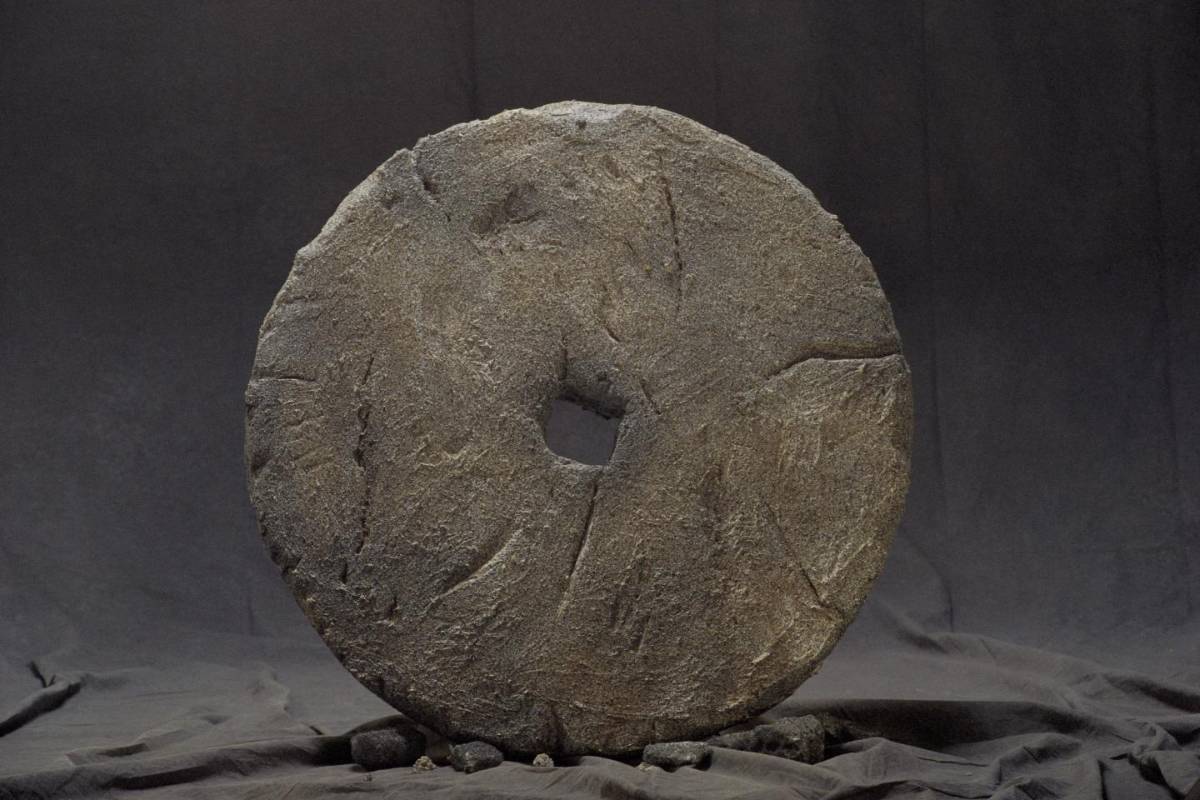
- 4000 BC:
The first domestication of grapes and olives occurred in the Eastern Mediterranean. - 4000 BC:
In China, irrigated rice cultivation began in water-covered, ploughed fields. - 3500 BC:
The first wheeled transport which was used for local needs and military purposes emerged and spread across large areas of Eurasia. - 3500 BC:
Stamp seals began to be used for administrative and economic purposes in Western Asia. - 3300 BC:
Writing was invented in Mesopotamia. - 3200 BC:
The first ever city of Uruk emerges. - 3200 BC:
The beginning of Egyptian hieroglyphic writing. - 3200 BC:
The first bronze production in Western Asia. - 3100 – 2900 BC:
Proto-Elamite (Early Bronze Age) writing system from the Iranian Plateau. - 3000 BC:
… and metallurgy made its way to Western China.
Bibliography:
- Craig Stanford; John S. Allen; Susan C Antón. (2009). Biological Anthropology: The Natural History of Humankind
- Monroe W Strickberger. (2000). Evolution.
- Donovan Webster (2010). Meeting the Family: One Man’s Journey Through His Human Ancestry.


